Step Inside This Stunning Schoolhouse Makeover
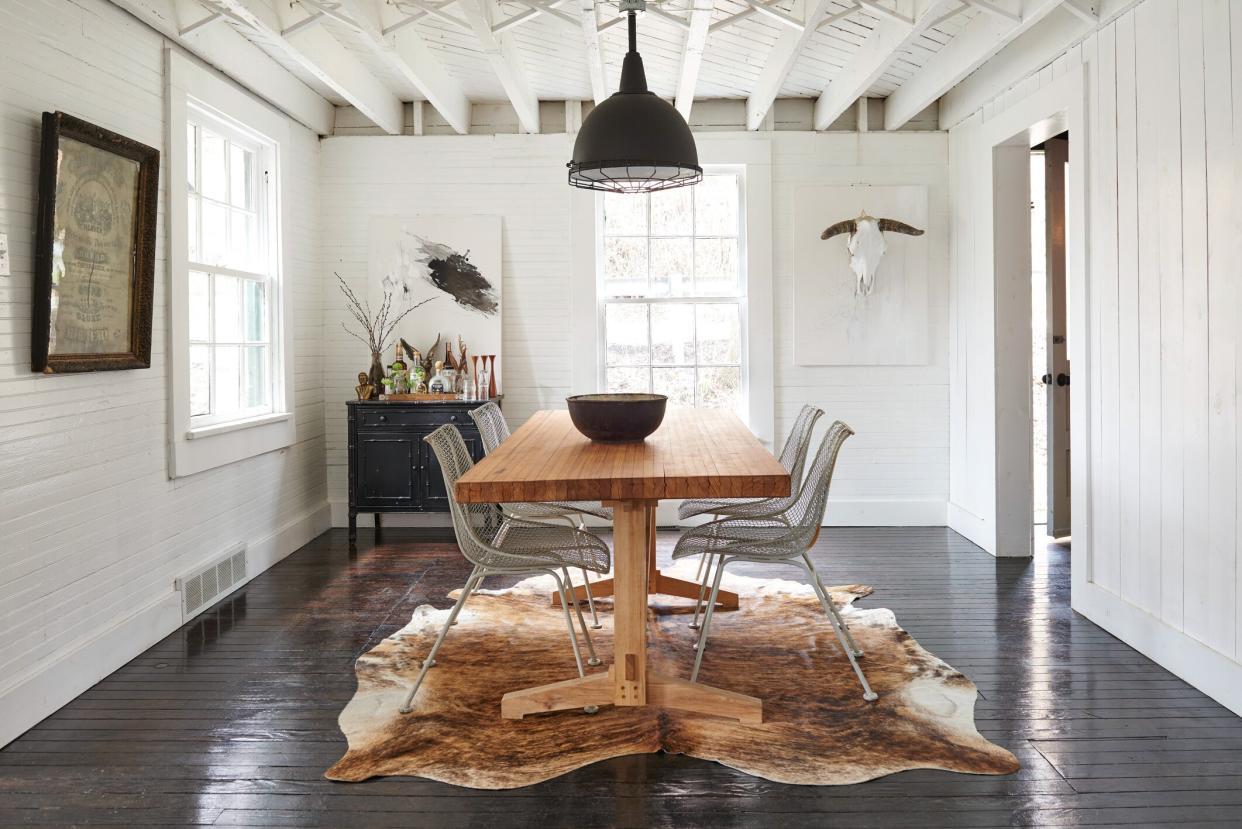
- Oops!Something went wrong.Please try again later.
Most people check Craigslist for a sofa or concert tickets, but a house? Leanne Ford found just what she was looking for in a one-room schoolhouse that had been converted to a home in the 1960s and not touched since.
Leanne was working in the fashion industry and was on the hunt for a getaway in her home state of Pennsylvania when she found the schoolhouse. She’d never renovated a home before, but she didn’t let that get in her way. “I wanted a place where I could come home and be quiet,” she says.
Her ultimate Craigslist find turned out to be life-changing: After digging into her own renovations, others soon asked for her help, prompting Leanne to switch her career to home design. You can check out more of her work in the HGTV series Restored by the Fords, which chronicles the efforts of Leanne and her brother, Steve, to save and restore old structures in the Pittsburgh area.
Leanne’s dining room table was made out of wood from a bowling alley floor. The table and midcentury Woodard metal chairs are illuminated by an industrial factory light, which Leanne painted black to suit her color scheme.
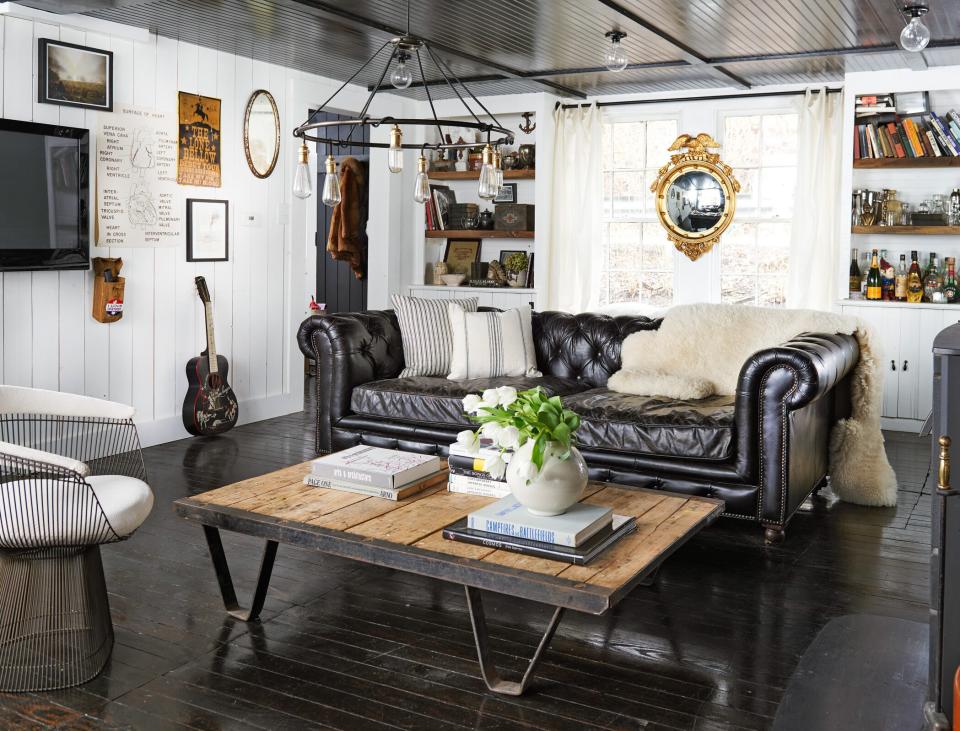
The Wilde Project
The house’s location on three acres of woods on the edge of the Pittsburgh suburbs was idyllic, but it took Leanne almost three years to evolve the interiors from dowdy residence to chic retreat. She envisioned a welcoming home where friends and family could gather on weekends. Those future guests helped tear down walls and open up a second level to the rafters. “We would do as much as we could stand for two to three days at a time,” she says. “The work was exhausting, and we were frugal.”
The living room exemplifies one of Leanne’s design tenets: “When you decorate with a lot of vintage, you should use elevated things within it,” she says. Her splurges, such as the leather Chesterfield sofa and the iconic Warren Platner chair, are collector’s pieces she’ll have forever.
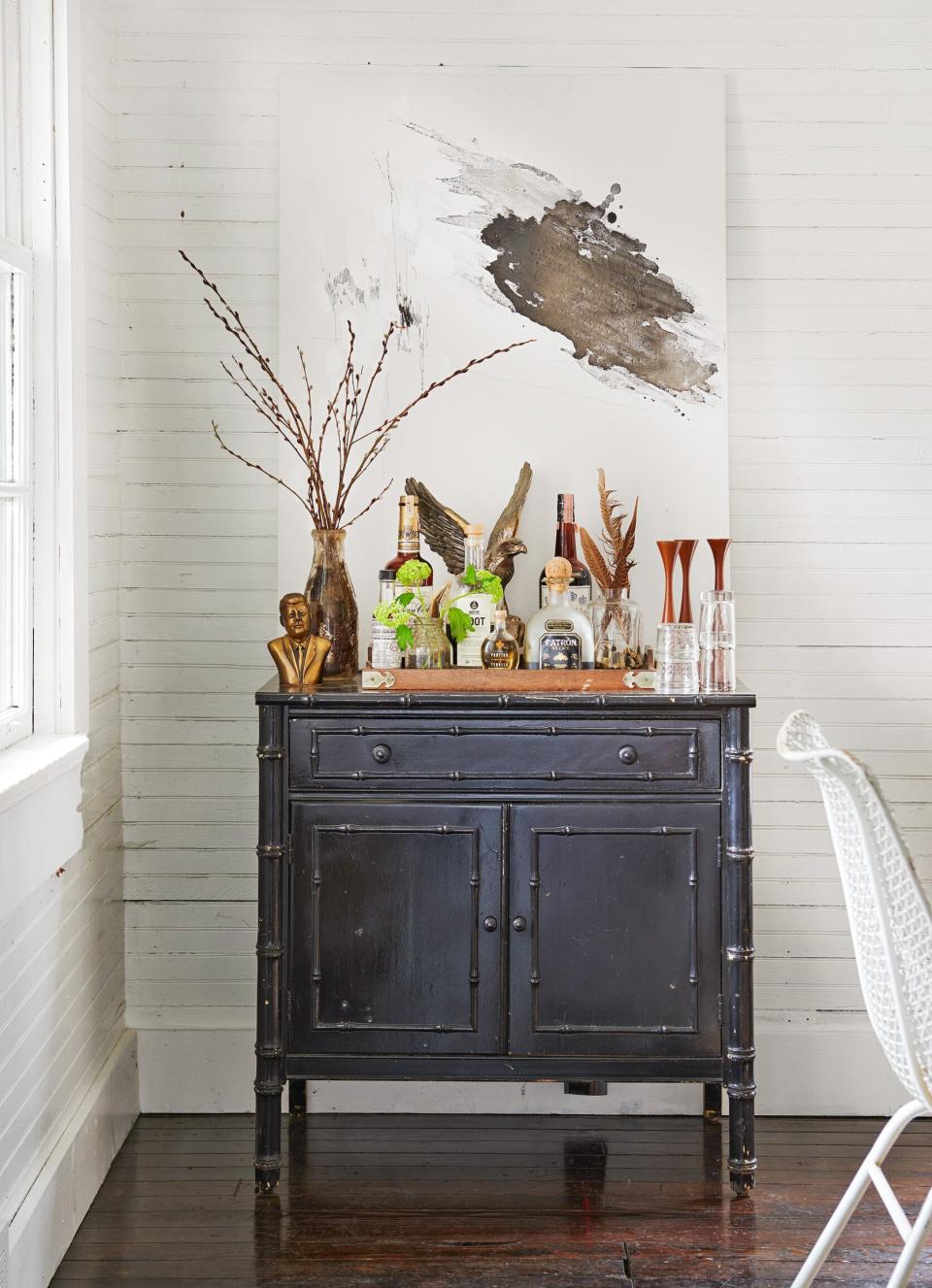
Her eye for bargains at thrift stores, flea markets, and even the neighbor’s castoffs helped the budget, too, but Leanne’s ultimate goal for the weathered finds was to let them add soul to rooms. “We were trying to be cheap, but even projects with higher budgets need vintage pieces,” she says. “They add life and make rooms feel lived-in and warm. I love the juxtaposition of old versus new, but I prefer my old things to actually be old, and my new things to be new. You can’t fake time and a life long lived. But I’m always happy to buy and enjoy a new piece that will some day have a life experience as well.”
Leanne spray-painted a $10 thrift store cabinet and placed it in her dining area as a bar. Never afraid to add paint to a find, Leanne has learned a few tricks along the way: A spray finish has a dressier look, whereas a brushed finish has “a warmer and more casual look,” she says.
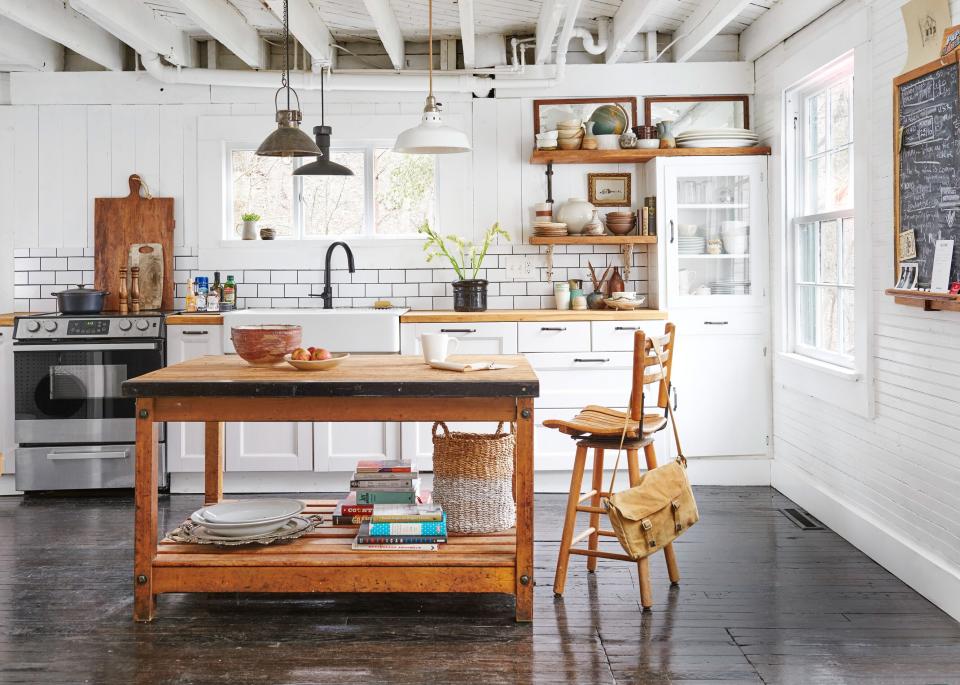
With the help of her brother, Steve Ford, in particular, Leanne restored the wood floors and original beaded-board paneling. She relied on IKEA kitchen cabinets and affordable subway tiles to help keep supply costs low. And she stuck to a concise palette of off-the-shelf colors from a home center: Behr’s Ultra White and Pure Black. “I love so many styles, genres, and aesthetics, that a consistent color palette is a way to make things work together,” Leanne says.
To make the new IKEA kitchen cabinets feel more homemade, Leanne added salvaged hardware and surrounded them with vintage wood courtesy of a baker’s counter used as an island and wall shelves made from cuts of old wood she unearthed during the remodeling process. She furthered the vintage vibe with a backsplash of affordable subway tile and found accessories—such as the barstool that she plucked from her neighbor’s trash and an antique slate chalkboard (“That thing weighs a ton!” she says). Even the dinnerware is collected. “Some of it is from local artisans; some I made in summer camp,” Leanne says. “The consistency is the handmade feeling it all has.”
“I joke that I only decorate in the colors of dogs: black, white, gray, and tan. I just really like simple colors.”
—Homeowner and interior designer Leanne Ford
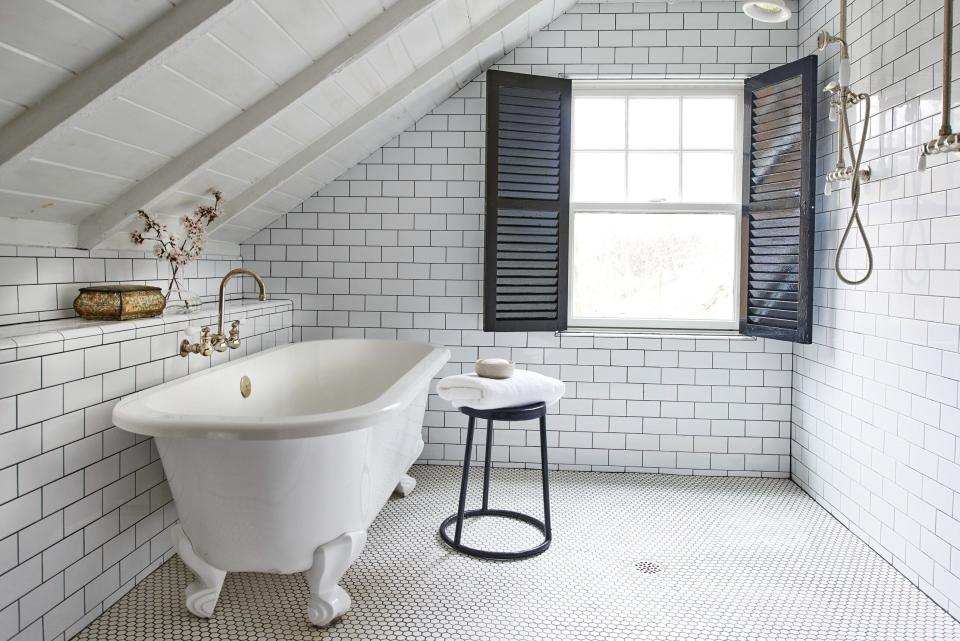
The bath is carved from attic space, and Leanne tiled one end to create a wet zone. It’s practical given the awkward architecture, and it scratched one of Leanne’s design itches. “One of my favorite restaurants in New York City was Schiller’s,” she says. “The whole place was done in subway tile. Since I was a teenager, I have thought, ‘Someday I will have a room like this.’ It took me a while, but I finally got it.” To reinforce the vintage vibe, she added a claw-foot tub and black-painted shutters to screen the window.
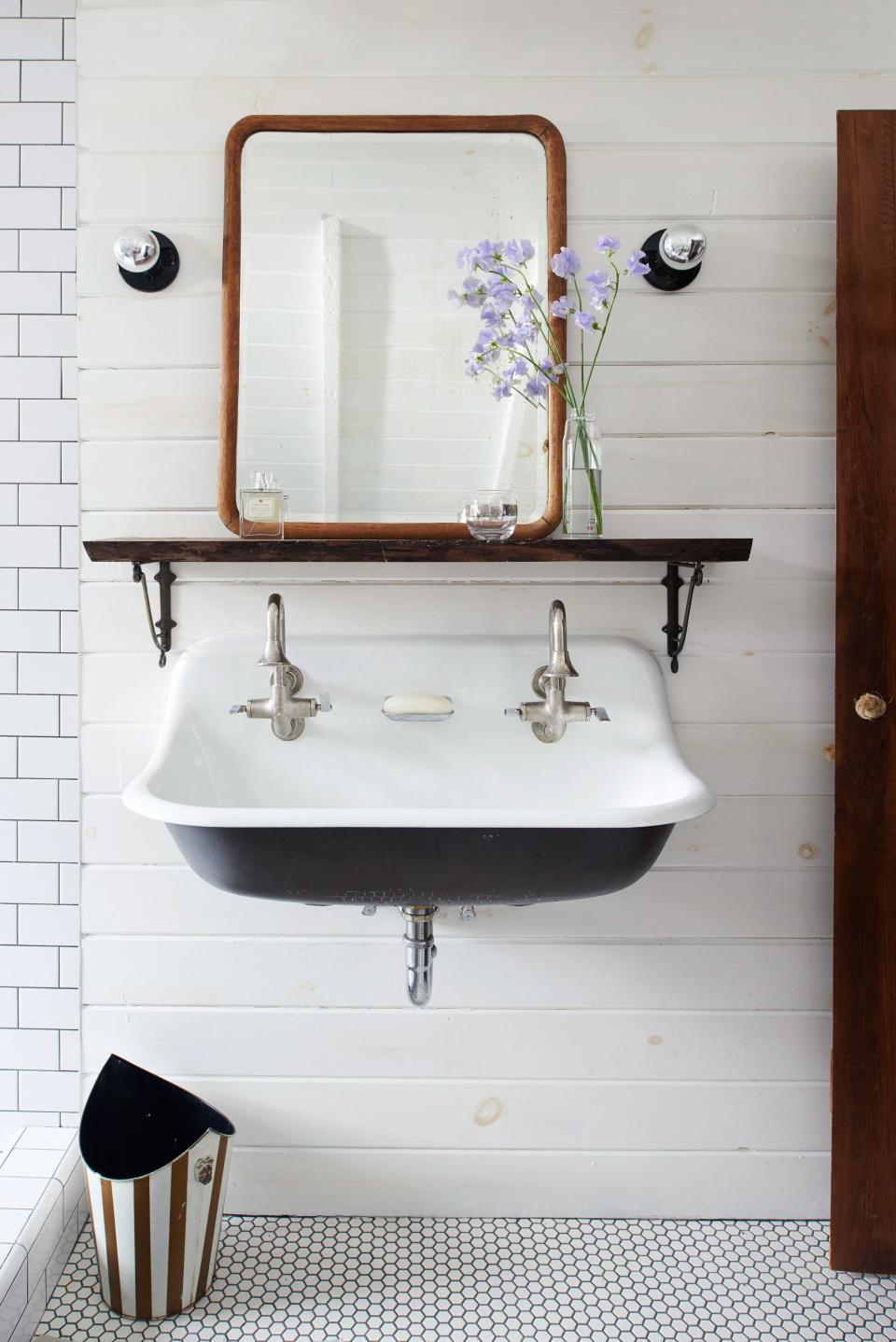
Ann VanderWiel Wilde
Leanne opted for a laundry sink, which has the industrial look she favors, in the bath. To cultivate vintage charm, she recommends hunting for vintage lighting. Old chandeliers, sconces, and lamps lend rooms custom character. Just know that a found fixture may have to be updated for safety. Leanne had her collection of factory lights rewired at a lighting store. “Worth it!” she says.
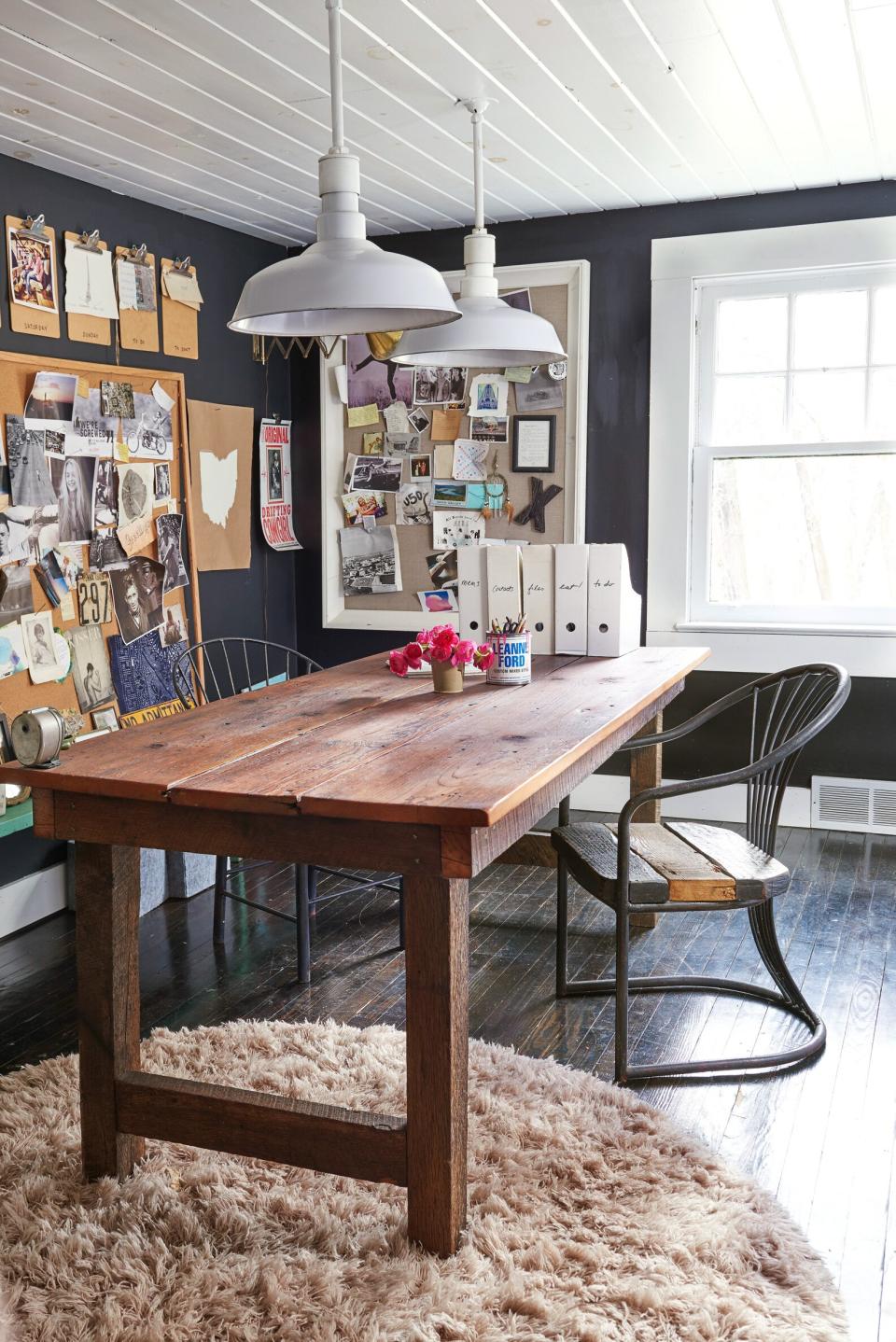
Jay Wilde
In her second-floor office, which also functions as a guest bedroom, large bulletin boards chronicle Leanne’s design inspirations. A friend made the spacious desk and Leanne attached her childhood pencil sharpener to it. When a wood slat broke on one of her flea-found desk chairs, Leanne just filled in with a piece of leftover attic rafter. “A lot of my design approach is to act like it’s on purpose,” Leanne says. “When I look at homes, I’m always drawn to the imperfect things.”
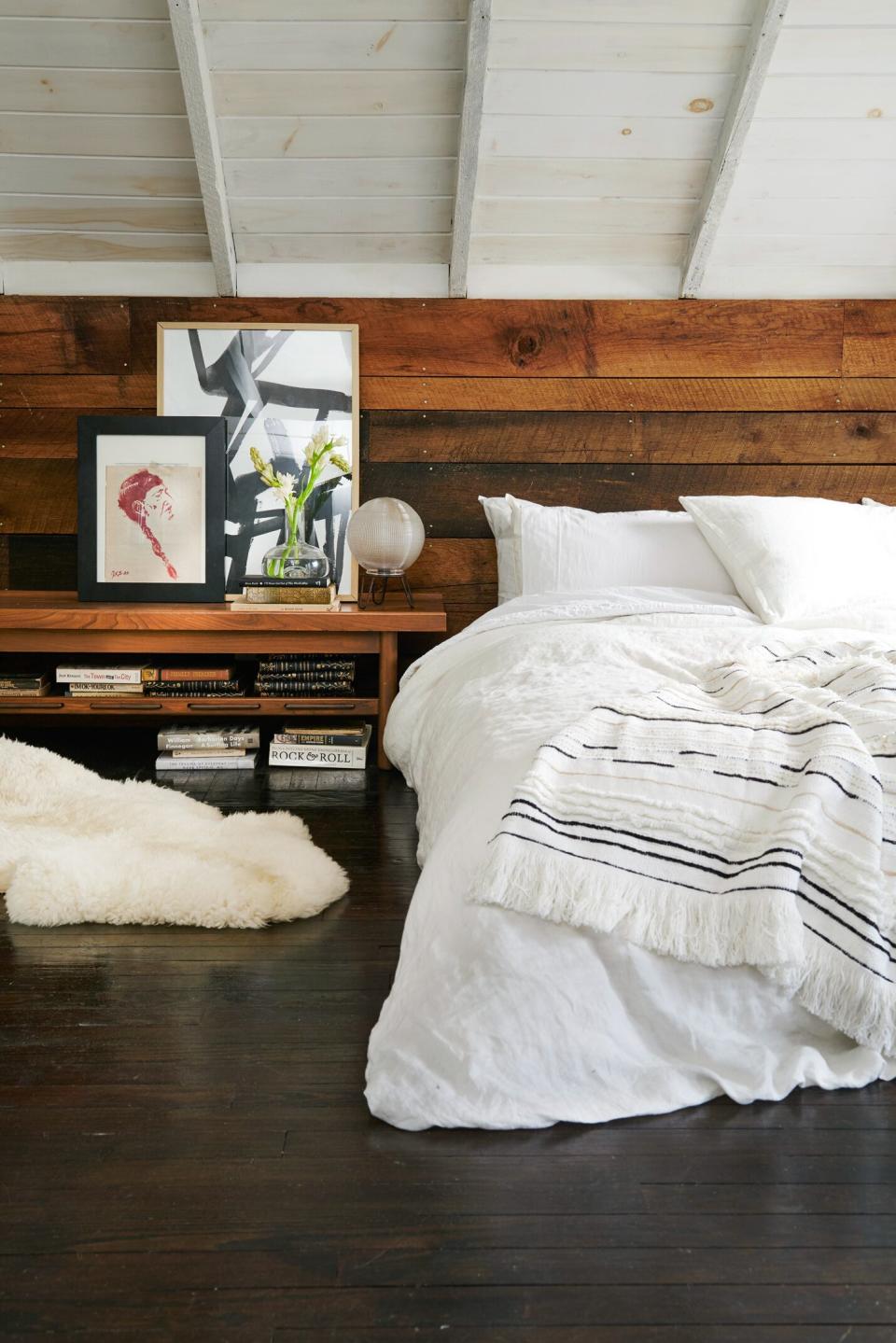
Ann VanderWiel Wilde
Stained wood paneling acts as a headboard for Leanne’s bed, which sits on the floor to allow more headroom under the roofline. "I love all old wood equally—beat up, clean, light, dark, finished, unfinished—you name it,” Leanne says. The heft and texture of old wood gives a space instant character. For Leanne, it was worth refinishing the plank floors and painting the original beaded board. The only drawback to salvaged wood? Pulling nails and stripping hardware. “I only do it if I can’t talk anyone else into it,” she says.
A midcentury bench she inherited from her great-aunt serves as a bedside table, where she displays a contemporary print and a portrait of Willie Nelson she ripped from Rolling Stone magazine.

